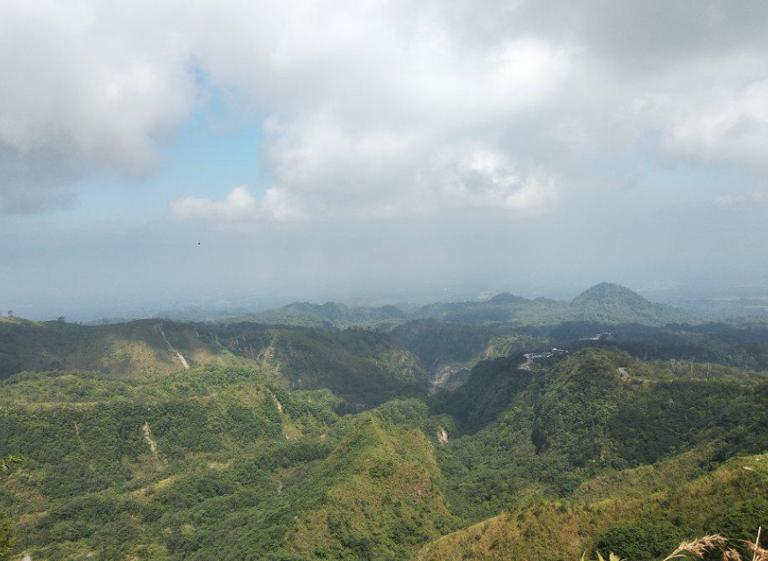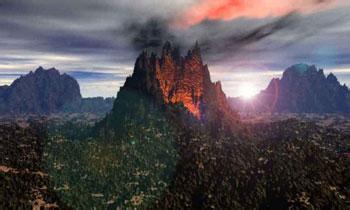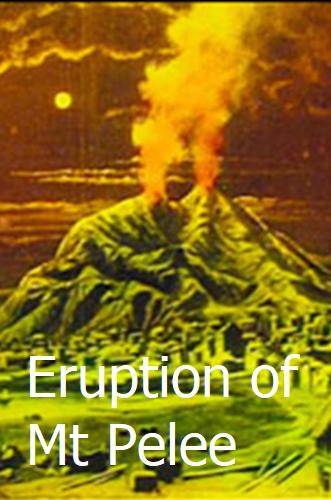The eruption of Laki volcano in 1783
On June 8, 1783, the dormant Laki volcano in southern Iceland suddenly resurrected, covering 565 km² of land. The eruption of Laki volcano lasted intermittently for four months and was considered to be the largest lava eruption on Earth ever. Laki volcano was located in remote mountainous areas far from residential areas, so there were no direct casualties. But volcanic ash covered the ground and inhibited plant growth. The release of large amounts of sulfur gas hindered the growth of crops and plants in Iceland, resulting in the death of most livestock. The coming winter was worse for Icelanders. They finished their food reserves and became hungry. One fifth of the island's population (about 9,500 people) was starving to death. Large quantities of volcanic gases cause smog over most parts of the continent, even over Syria, the Altai Mountains in Western Siberia and North Africa, eventually leading to more than 10 times the number of deaths worldwide.

The eruption of the Kelud volcano in 1586
Indonesia's Kelud volcano has erupted more than 30 times in the past 1000 years. Located in densely populated East Java, just 90 km from Surabaya, Indonesia's second largest city. Since records began, more than 15,000 lives have been lost by the Kelud volcano; the 1990 outbreak killed 34 people and injured hundreds more; the 1919 eruption reverberated hundreds of kilometers, destroying dozens of villages and killing at least 5,500 people; 10,000 people died in 1586.

The eruption of Unzen-dake volcano in 1792
The Unzen-dake volcano erupted in 1792 and landslides led to tsunamis, landslides and tsunamis hads killed 15,000 people, which possibly the worst volcanic disaster in Japan's history. On June 3, 1991, the volcano erupted again, forcing thousands of families near the volcano to move away, but many people died.

The eruption of the Druze volcano in Nevada in 1985
When Colombia's snow-covered Nevadadel Ruiz volcano erupted on Nov. 13, 1985, although the eruption intensity was relatively small, it was accompanied by a mudslide flow of ash and gas accompanied by melting snow and ice. When the mudslides rolled down, soil and rock were added to increase its volume and density, resulting in mudslides at a depth of 39 meters sweeping some inhabited valleys at a speed of 48 km/h, destroying everything they pass through. The town of Armero was about 74km from the volcano, but two and a half hours after the eruption, mudslides reached the town, destroyed the Armero town, three-quarters of the population, about 25,000 people died, became the worst natural disaster in Colombia.

The eruption of Pelee volcano in 1902
Located in the north of Martinique island in the west Indies in the eastern Caribbean, which was the highest peak on the island with a height of 1350m. Pelee volcano was one of the most active volcanoes in the eastern Caribbean islands. On May 8, 1902, the violent eruption of Mount Pelee destroyed the whole city of st. Pierre, 6km to the south, covering one sixth of the island with volcano extrusive, nearly all the city's 30,000 residents died and only two survived. Three nearby towns suffered the same fate, with all 16 crew members killed at their port. Of the 26km² of land which burned, 36,000 people died and only 30 survived. The 1902 eruption was the deadliest and one of the most devastating disasters in the world.

The eruption of Tambora volcano in 1815
An explosion of Tambora volcano in Indonesia in 1815 lasted from April 5 to mid-July, releasing 80 million times the power of the atomic bomb dropped by the United States on Hiroshima, Japan at the end of World War II, which was the most violent volcanic eruption with the volcanic eruptions index (VEI) for 7. The volcanic eruption sent ash and debris into the air at an estimated 1.7 million tons. Earthquakes associated with volcanic eruptions cause subsidence of the seabed crust, triggering a tsunami that engulfed the nearby town of Tanbora. The eruption killed 92,000 people, 80,000 of whom died of hunger as the volcano devastated agriculture. Volcanic ash and cumulus clouds filled with thick dust affected the entire northern hemisphere, causing an unusually cold climate in 1816 and serious crop failures. So some people say that there was no summer in that year. (Source: World Science and Technology Report)

Comment list ( 0 )
